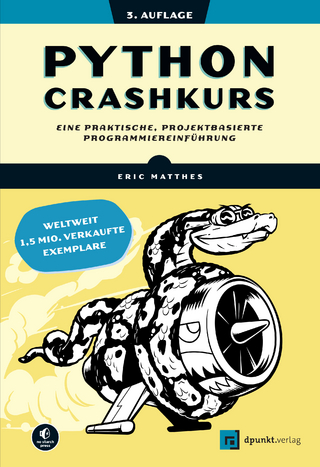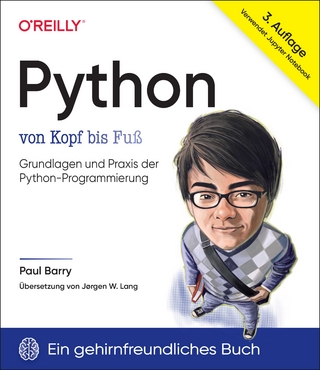
Simulation with Python
Apress (Verlag)
978-1-4842-8184-0 (ISBN)
The book discusses simulation used in the natural and social sciences and with simulations taken from the top algorithms used in the industry today. The authors use an engaging approach that mixes mathematics and programming experiments with beginning-intermediate level Python code to create an immersive learning experience that is cohesive and integrated.
After reading this book, you will have an understanding of simulation used in natural sciences, engineering, and social sciences using Python.
What You'll Learn
Use Python and numerical computation to demonstrate the power of simulation
Choose a paradigm to run a simulation
Draw statistical insights from numerical experiments
Know how simulation is used to solve real-world problems
Who This Book Is For
Entry-level to mid-level Python developers from various backgrounds, including backend developers, academic research programmers, data scientists, and machine learning engineers. The book is also useful to high school students and college undergraduates and graduates with STEM backgrounds.
Ron Li is a long-term and enthusiastic educator. He has been a researcher, data science instructor, and business intelligence engineer. Ron published a highly rated (4.5-star rating out of 5 on amazon) book titled Essential Statistics for Non-STEM Data Analysts. He has also authored/co-authored academic papers, taught (pro bono) data science to non-STEM professionals, and gives talks at conferences such as PyData. Aiichiro Nakano is a Professor of Computer Science with joint appointments in Physics & Astronomy, Chemical Engineering & Materials Science, Biological Sciences, and at the Collaboratory for Advanced Computing and Simulations at the University of Southern California. He received a PhD in physics from the University of Tokyo, Japan, in 1989. He has authored more than 360 refereed articles in the areas of scalable scientific algorithms, massive data visualization and analysis, and computational materials science.
Chapter 1: Calculating Pi and Beyond: Searching Order in Disorder with Simulation.- Chapter 2: Markov Chain: A Peek into the Future.Chapter 3: Multi-Armed Bandits: Probability Simulation and Bayesian Statistics.- Chapter 4: Balls in 2D Box: A Simplest Physics Engine.- Chapter 5: Percolation: Threshold and Phase Change.- Chapter 6: Queuing System: How Stock Trades are Made.- Chapter 7: Rock, Scissor and Paper: Multi-Agent Simulation.- Chapter 8: Matthew Effect and Tax Policy: Why the Rich Keeps Getting Richer.- Chapter 9: Misinformation Spreading: Simulation on a Graph (Centrality, Networkx).- Chapter 10: Simulated Annealing and Genetic Algorithm.
| Erscheinungsdatum | 26.08.2022 |
|---|---|
| Zusatzinfo | 80 Illustrations, color; 10 Illustrations, black and white; XV, 166 p. 90 illus., 80 illus. in color. |
| Verlagsort | Berkley |
| Sprache | englisch |
| Maße | 178 x 254 mm |
| Themenwelt | Mathematik / Informatik ► Informatik ► Datenbanken |
| Informatik ► Programmiersprachen / -werkzeuge ► Python | |
| Informatik ► Theorie / Studium ► Algorithmen | |
| Informatik ► Theorie / Studium ► Künstliche Intelligenz / Robotik | |
| Schlagworte | computer simulation • Markov Chain • MonteCarlo Simulation • Network Theory • Numerical calculation • numerical simulation • Object Oriented Programming • Python • Scientific Computation |
| ISBN-10 | 1-4842-8184-5 / 1484281845 |
| ISBN-13 | 978-1-4842-8184-0 / 9781484281840 |
| Zustand | Neuware |
| Informationen gemäß Produktsicherheitsverordnung (GPSR) | |
| Haben Sie eine Frage zum Produkt? |
aus dem Bereich


